Gluteal Muscles
Introduction
The gluteal muscles, commonly known as the glutes, comprise a group of three muscles located in the buttock region. These muscles play a pivotal role in a variety of movements involving the hip and thigh, contributing significantly to posture, stability, and locomotion.
Anatomically significant, the gluteal region is located on the posterior aspect of the pelvis and contains muscles necessary for human dynamic movement and upright stability. It is a vital conduit for several important neurovascular structures that enter the lower limb.
The gluteus maximus, gluteus medius, and gluteus minimus are the three muscles that make up the gluteal region, sometimes referred to as the buttocks. The term “glutes” refers to the group of gluteal muscles.
The three muscles originate in the ilium and sacrum and insert into the femur. The muscles’ functions include extension, abduction, external rotation, and internal rotation of the hip joint. The superior and inferior gluteal arteries, which branch off the internal iliac artery, supply blood to the gluteal muscles.
Gluteus Maximus.
The gluteus maximus is the largest gluteal muscle. It is also the most visible, creating the shape of the buttocks.
- Origin: the gluteal (posterior) surface of the ilium, sacrum, and coccyx. The fibres slope across the buttock at a 45° angle.
- Insertion: the femur’s gluteal tuberosity and iliotibial tract.
- Actions: It is the primary extensor of the thigh and aids in lateral rotation. However,
it is only used in situations where force is required, such as running or climbing. - Innervation: The inferior gluteal nerve.
- Blood supply: This muscle receives blood from the muscular branches of the inferior and superior gluteal arteries.
Gluteus Medius
The gluteus medius muscle is fan-shaped and located between the gluteus maximus and minimus. It has a similar shape and function to the gluteus minimus.
- Origin: the gluteal surface of the ilium.
- Insertion: the greater trochanter’s lateral surface.
- Actions: Lower limb abduction and medial rotation. It stabilises the pelvis during locomotion, preventing the pelvis from ‘dropping’ on the opposite side.
- Innervation: Superior gluteal nerve.
- Blood supply: The superior gluteal artery’s deep branch supplies blood to this area.
Gluteus Minimus.
The gluteus minimus is the superficial gluteal muscle with the greatest depth and smallest size. It has a similar shape and function to the gluteus medius.
- Origin: the ilium converged to form a tendon.
- Insertion: the greater trochanter’s anterior side.
- Actions: Lower limb abduction and medial rotation. It stabilises the pelvis during
locomotion, preventing the pelvis from ‘dropping’ on the opposite side. - Innervation: Superior gluteal nerve.
- Blood supply: the superior gluteal artery’s deep branch.
Functions of the gluteal muscles
gluteal muscles help to stabilise the upper body and pelvis, facilitate locomotion, and extend the hip. The gluteal muscles act on the hip joint, primarily to facilitate abduction and extension of the thigh, but some also help with adduction, external rotation, and internal rotation of the leg.
The gluteus maximus muscle is important for daily activities, explosive athletic performance, and joint stability. It’s our most powerful hip extensor.
If the gluteus medius and minimus muscles did not contract properly, the pelvis would drop to the opposite side, and the trunk would lean to the opposite side. This is because the gluteus medius and minimus muscles stabilise the pelvis during single leg stance, which accounts for 30% of our normal gait cycle. See the Trendelenburg Sign.
Embryology
The gluteus maximus, like all other limb muscles, develops from somites, which are bilaterally paired blocks of paraxial mesoderm. Myoblasts migrate into limb buds during the fifth week of development. These cells condense to form either the dorsal or ventral limb buds. The gluteus Maximus is one of the extensors and abductors that are composed of the dorsal limb buds of the lower extremity.
At around four weeks, the lower limb bud forms, which corresponds to embryonic stage 14. By stage 17, the lower limb has a flattened footplate, an identifiable hip joint, and no true knee. The digits separate between stages 20 and 23, with the toes clearly defined by stage 23, which corresponds to the end of week eight. The gluteus medius, like other skeletal muscles, is made up of cells derived from somites located in the lower limb bud. These cells demyelinate along the dermomyotome’s hypaxial edge. They then migrate to the limb bud and multiply there. When myogenic determination factors are expressed, they eventually differentiate into the gluteus medius muscle.
The gluteus minimus muscle develops from myoblasts that surround the developing bone. Myoblasts form as a result of nearby tissues releasing molecular signals that cause somites to differentiate into myoblasts. Myoblasts then fuse to form myotubes, which are distinguished by their long, tubular, and multinucleated shape. As the myotubes grow, they start to form layers that separate the muscle from the surrounding connective tissue.
The lower limb buds begin to form around the end of the fourth week, slightly later than the upper limb buds. Furthermore, the lower limb will rotate medially while the upper limb rotates laterally.
Gluteal muscles injury
The majority of gluteal injuries are caused by trauma, such as a fall or a direct blow to the buttocks. Hip overuse injuries can cause inflammation and damage to the gluteal muscles, which help move the hip, as well as the tendons that connect the gluteal muscles to the hip’s greater trochanter.
- A gluteal strain is a stretch injury or tear in one of these critical muscles that occurs as a result of sudden trauma or repetitive overuse over time.
- Running injuries frequently involve inflammation of the hip, piriformis, iliotibial band, and gluteus muscles.
- In athletes, gluteal tendinopathies can mimic hip bursitis. Overtraining can lead to injuries, particularly in weightlifting and squats.
- Gluteal tendinitis: Repetitive movements cause small micro tears in your tendons, resulting in inflammation and tendinitis. You may experience severe
- Gluteal tendinopathy: This type of hip pain is caused by a tendon injury that causes tissue breakdown or deterioration.
- Trochanteric bursitis is inflammation of a bursa sac (bursitis) in your hip. These fluid-filled sacs fill the gaps between bones, muscles, and tendons. Some patients with trochanteric bursitis develop greater trochanter pain syndrome (GTPS).
- Lack of flexibility
Limited hip and pelvic flexibility significantly increases the risk of gluteal strain. Tightness in muscles such as the hip flexors, hamstrings, and calves causes the gluteal muscles to be chronically shortened. This harms the optimal length-tension relationship in muscle tissue, forcing the glutes to work at a mechanical disadvantage. Then, when it comes into action for tasks like hip extension, external rotation, or pelvic stabilisation, it strains beyond its capacity. Stretching and mobility exercises help to normalise muscle length and reduce strain risk. - Muscle imbalances
The gluteal muscles do not work alone; they are part of a synergistic group of hip muscles that share the load during movement. Imbalances or weakness in certain synergistic muscles, such as the deep hip external rotators, cause glute overload. For example, weak external rotators increase the torque required by the glutes to control rotation, predisposing to tissue failure. Addressing flexibility and strength deficits through personal training can help prevent gluteal injuries. - Blunt trauma to the buttocks can cause tears in the gluteal muscles. Forces from falling and landing directly on the bottom muscles, as well as a blow to the back of the thigh, can strain tissue.
- Overuse
Running, cycling, and other sports require a repetitive hip extension, rotation, and pelvic stabilisation from the glutes, which can lead to fatigue. When distance or intensity is increased too quickly, the cumulative demand can exceed tissue capacity, particularly when combined with poor flexibility. Even after prolonged activity at submaximal levels, a sudden increase in load, such as sprinting to the finish line, frequently causes a strain. Slow progression in training allows for tissue adaptation and prevents overload.
Symptoms
The most common signs of a gluteal muscle injury are:
- Pain is typically localised in the buttocks near the strained muscle.
- Tenderness and palpation may occur directly over the muscle.
- Stiffness – A strained muscle may feel tight and stiff, particularly after rest.
- Bruising – Some severe muscle strains result in bruising over the injured area as blood leaks into the muscle tissue.
- Spasms – Muscle spasms occur when strained muscles involuntarily contract.
- Weakness – Difficulty activating the injured muscle due to pain and dysfunction, which prevents activities that require a hip extension, such as climbing stairs.
Treatment
If the gluteal injury is caused by a direct blow or fall that results in a contusion, the treatment goal is to reduce inflammation in the area.
- Rest
Restrict sporting activity and avoid aggravating movements such as stair climbing during the early stages of recovery. Relative rest allows torn muscle fibres to recover. Continue modified activity as tolerated to prevent the area from becoming too stiff. - Ice
Ice therapy for 10-15 minutes per day helps to reduce pain and swelling. Ice inhibits local blood flow to the injured tissue. Apply ice directly to the painful muscle belly, taking care not to burn the skin. - Anti-inflammatory medications
NSAID pain relievers like ibuprofen can have anti-inflammatory properties that help control swelling. Always follow medication precautions and instructions. - Compression
Wrapping elastic bandages around the hips can help to reduce swelling and increase comfort. Ensure that the bandages are not too tight, allowing airflow to the skin beneath. It can be difficult to bandage the gluteal region, though. - Elevation
- Some patients with gluteal injuries have difficulty sitting on the commode and develop constipation. A stool softener may be used for a short time.
- If the gluteal injury is the result of overuse or an abnormal gait (walking pattern), physical therapy may be recommended to prevent further injury and inflammation.
- Physical therapy can also help treat tendinopathies and other inflammation of the gluteus muscles that are not caused by trauma. Massage and ultrasound are two possible treatment modalities. To avoid future injury, rehabilitation may include exercises that strengthen muscles and maintain range of motion.
In some cases, medical professionals may consider giving steroid injections. Using ultrasound, a long needle is guided near the injury site so that the injected steroid can work directly on the inflammation.
Surgery is rarely considered, but it may be an option if nonsurgical treatments fail and torn muscles must be repaired.
Exercises of the gluteal muscles
- Stretching exercises
- Strengthening exercises
Stretching exercises
Seated glute stretch
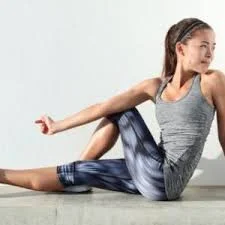
This simple stretch helps to relieve tightness in the glutes, hips, and back. If your hips require additional support, sit on a yoga block or folded towel.
To perform this stretch:
- Using your legs out in front of you, take a seat on the floor.
- Lift your left leg and place its ankle on your right knee while keeping your back straight. Lean slightly forwards to deepen the stretch.
- After 20 seconds of holding, switch to the other side and repeat.
Seated figure-four stretch.

The seated figure-four stretch, also known as the Seated Pigeon Pose, helps to loosen the glutes and surrounding muscles.
To perform this stretch:
- Sit upright in a sturdy chair. Just above the knee, place your right ankle on top of your left thigh. Put your hands on your shins.
- Keep your spine straight and lean slightly forward to deepen the stretch.
- Hold for 20 to 30 seconds.
- Return to your starting position. Repeat for the other leg.
- In addition to chair stretches, you can stretch your glutes while sitting on the ground or standing.
Standing figure-four stretch.
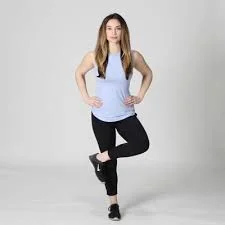
This exercise is a standing version of the seated figure-four stretch. It’s an excellent way to relieve tightness in your glutes, hips, and back.
- Stand up straight. Cross your left ankle over your right thigh, just above your knee, forming a “4” shape. Hold onto a desk or a wall for support.
- Slowly bend your right knee and lower your hips into a squat position.
- Hold for 20 to 30 seconds.
- Return to your starting position. Repeat with the other leg.
Knee to the opposite shoulder.
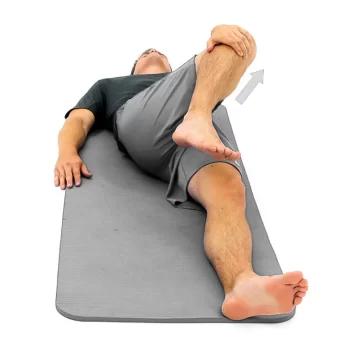
If you’re experiencing sciatica pain, try this glute stretch. Pulling your knee towards your opposite shoulder can help to relax your glutes and relieve tension around your sciatic nerve.
To perform this stretch:
- Begin on your back, legs extended and feet flexed upwards.
- Bend, lift your right knee and wrap your hands around it.
- Reach up to your left shoulder with your right knee.
- Hold for 20 to 30 seconds.
- Straighten your right leg, then repeat with your left.
Downward Facing Dog.

Downward Facing Dog is a popular yoga pose for stretching the glutes, hamstrings, and lower back. It involves the following steps:
- Assume a tabletop position by putting yourself on your hands and knees.
- Extend the tailbone away from the ground as you slowly raise the knees off the floor.
- Press the thighs back and gently push the heels as close to the floor as possible while keeping the knees straight. There should be a stretch, but it shouldn’t hurt.
Strengthening exercises
Squats
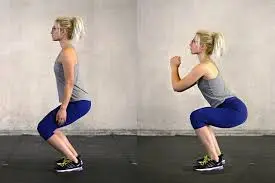
One of the greatest workouts for targeting the gluteus maximus, the largest muscle in the lower body, is the squat. They also target the hips, thighs, calves, and core.
How To Do Squats
- Stand with your feet hip distance apart. Hold weights at shoulder level or by your sides to increase the intensity.
- Bend your knees and lower into a squat.
- To stand, press into your heels.
- Repeat for two or three sets of eight to sixteen reps.
Lunges
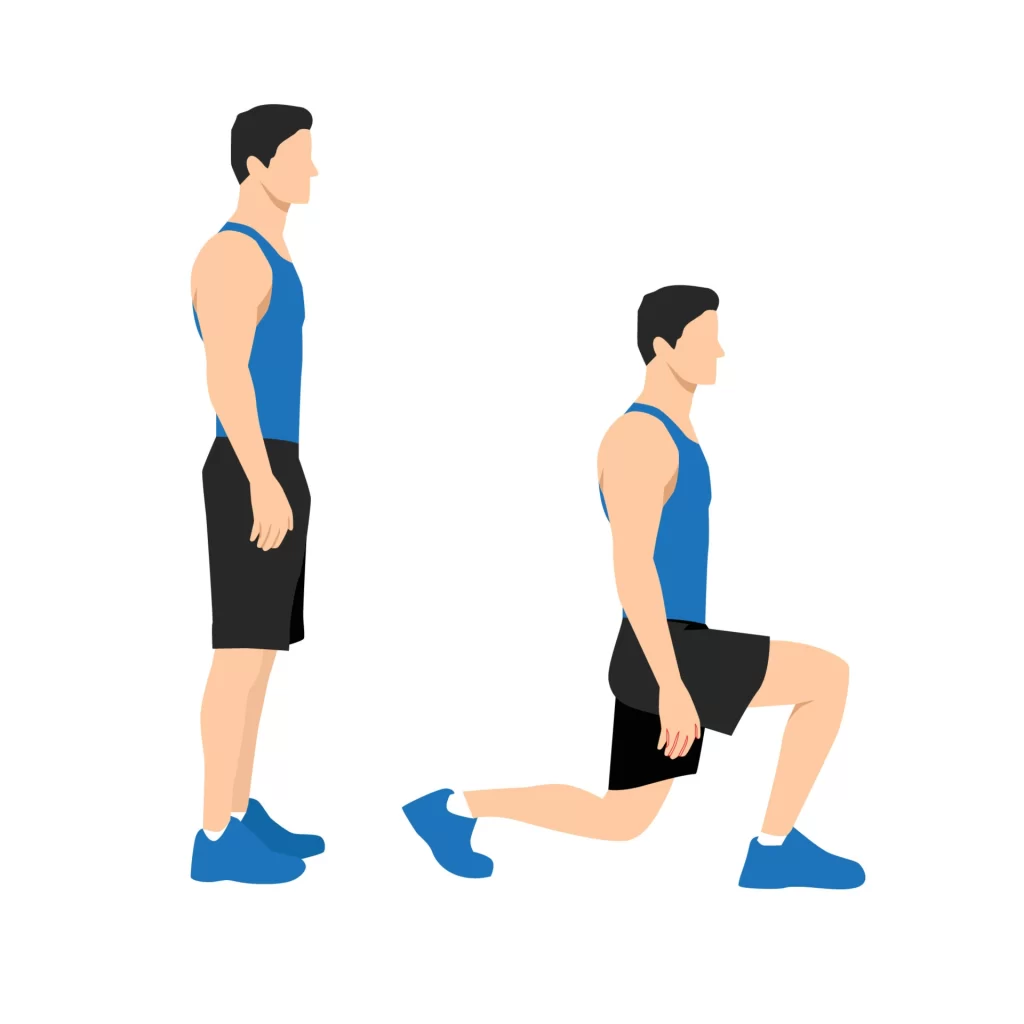
Lunges are a popular buttock exercise. In a staggered stance, you must rely heavily on your glutes to maintain balance. The stance also causes the glutes on the front of your legs to work harder. Lunges also work other muscles such as your hamstrings, quads, and calves.
How to do lunges.
- Stand with your feet staggered, one forward and one back (about three feet apart).
- Bend both knees and lunge straight down, bringing your back knee to the floor.
- Do not lunge forward over your front toes. Remember to keep your front heel planted.
- To stand, press into your heel.
- Repeat 1–3 sets of 12–16 repetitions. Hold some weights to increase the intensity.
Step-Ups
The way to do step-ups
- Stand in front of the step or platform.
- Keep your foot on the step
- Step up by pressing into your heel and touching your left toe to the step.
- Keep your right foot on the step and bring your left foot down to the floor. For added intensity, bend your knees into a lunge position.
- Repeat for 1 to 3 sets of 12 to 16 reps per side. To increase the intensity, place weights or a resistance band under your standing foot.
- Push into your heel to lift the body and focus your entire weight on your stepping leg.
Hip Extensions

While the previous compound exercises are great for working multiple muscles at once, hip extensions are ideal for targeting the glutes more specifically. Shoulder and core exercises are also beneficial.
How To Do Hip Extensions
- Get on your hands and knees, placing your hands directly under your shoulders and your knees directly beneath your hips.
- Lift your right leg until it reaches your glutes while keeping the right knee bent.
- Lower your leg.
- Repeat each side 12–16 times.
- To increase the intensity, squeeze a weight in the back of your knee or use ankle weights.
Glute Bridge
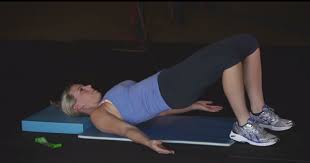
Most people can safely perform glute bridges, which are an excellent beginner exercise. To perform one:
- through both feet, flat on the ground and bent knees, lie on your back.
- Perform the muscles of your abdomen and raise your hips gradually. Aim for a knee angle of approximately 90 degrees.
- Maintain the raised position for a few counts, then lower your hips and repeat.
Side-lying hip abduction.
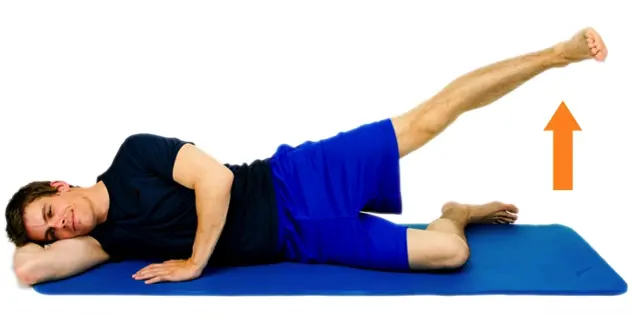
The side-lying hip abduction, also known as a leg lift, is a simple exercise that most beginners can do without using any equipment. To make it more difficult, a person can add an ankle weight to their upper leg.
To do a side-lying hip abduction:
- Lie on one side, legs straight. Support the head with one hand while resting on the elbow.
- Flex the foot of the upper leg and lift it while engaging the core. Keep the upper leg straight. Lower it slowly.
- Repeat 10 to 12 times.
- Lie on the opposite side and repeat.
Clamshells
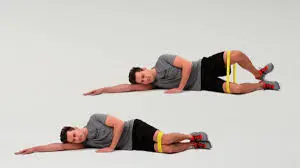
How to Do It:
- Just above the knees, wrap a resistance loop band around your thighs.
- Lie on your left side. Place your knees atop each other. assure that the angle between both of your legs is ninety degrees.
- Lift your right knee towards the ceiling, pushing against the resistance of the band. Rotate your hips to open your groin.
- Squeeze your heels together and raise your feet a few inches off the ground for an extra challenge. Keep your feet in this position throughout the workout.
- Complete 10 to 15 repetitions.
- Switch sides and repeat.
Summary
The gluteal region, located on the posterior aspect of the pelvis, is essential for human dynamic movement and upright stability. It contains three muscles: gluteus maximus, gluteus medius, and gluteus minimus. These muscles help stabilize the upper body and pelvis, facilitate locomotion, extend the hip, and assist with adduction, external rotation, and internal rotation of the leg. They develop from somites, bilaterally paired blocks of paraxial mesoderm.
Gluteal injuries are primarily caused by trauma, such as falls or direct blows to the buttocks. Overuse injuries can cause inflammation and damage to the gluteal muscles, which help move the hip and connect the gluteal muscles to the hip’s greater trochanter. Limited hip and pelvic flexibility increases the risk of gluteal strain.
Treatment for a gluteal muscle injury includes rest, ice therapy, anti-inflammatory medications, compression, elevation, and physical therapy. Stretching exercises can relieve tightness in the glutes, hips, and back, while strengthening exercises like seated glute stretch, seated figure-four stretch, and knee to the opposite shoulder can be beneficial.
Exercises for the gluteal muscles include stretching exercises, squats, lunges, step-ups, and hip extensions.
FAQs
What are the three major muscles in the glutes?
The gluteus maximus, gluteus medius, and gluteus minimus are three of the muscles that make up the gluteal region, which is responsible for the formation of the buttocks. The gluteus maximus is the most superficial and largest of the three muscles, contributing significantly to the shape and form of the buttocks and hips.
Which is the most important glute muscle?
The gluteus maximus is one of the strongest and most well-known muscles in the body. However, it could not reach its full potential unless it strengthened two lesser-known, but potentially more important, glute muscles: the gluteus medius and gluteus minimus.
What is the function of the glutes?
Their primary function is to keep us upright and propel our bodies forward. Good pelvic alignment, propulsion during walking and running, and even standing on one leg all depend on having strong gluteals. Gluteals also support the lower back while lifting and help to prevent knee injuries.
What is the most frequently injured gluteal muscle?
With all of the work that the gluteus maximus muscles do, they are susceptible to injury. Some of the most common gluteus maximus injuries are: Sprains occur when the ligaments that connect the gluteus maximus to the bone stretch or tear.
What is the main gluteal nerve?
The superior gluteal nerve is located in the lower pelvis and is formed by the dorsal divisions of the sacral plexus’s L4, L5, and S1.
Where exactly are the glutes located in the body?
The muscles around the hip joint including the gluteal muscles are located at the back of the hip (buttocks).
References:
- Robertson, K. (2024, January 29). Gluteal Strain – Injury Symptoms & Treatment. ProPhysiotherapy. https://prophysiotherapy.co.uk/conditions/gluteal-strain/#:~:text=The%20most%20common%20symptoms%20of,stiff%2C%20especially%20after%20rest%20periods.
- Faaem, B. W. M. F. (2022, April 12). Gluteal Injury Symptoms, Treatment, Recovery Time & Diagnosis. MedicineNet. https://www.medicinenet.com/gluteal_injury/article.htm
- Elzanie, A., & Borger, J. (2023, April 1). Anatomy, Bony Pelvis and Lower Limb, Gluteus Maximus Muscle. StatPearls – NCBI Bookshelf. https://www.ncbi.nlm.nih.gov/books/NBK538193/#:~:text=The%20gluteal%20muscles%20are%20a,the%20buttock%20and%20hip%20area.
- Muscles of the Gluteal Region – Superficial – Deep – TeachMeAnatomy. (2024, May 15). TeachMeAnatomy. https://teachmeanatomy.info/lower-limb/muscles/gluteal-region/
- Gluteal Muscles. (n.d.). Physiopedia. https://www.physio-pedia.com/Gluteal_Muscles
- Gluteal muscles. (2023, October 30). Kenhub. https://www.kenhub.com/en/library/anatomy/gluteal-muscles
- Professional, C. C. M. (n.d.). Gluteal Tendinopathy. Cleveland Clinic. https://my.clevelandclinic.org/health/diseases/22960-gluteal-tendinopathy
- Greco, A. J., & Vilella, R. C. (2023, May 22). Anatomy, Bony Pelvis and Lower Limb, Gluteus Minimus Muscle. StatPearls – NCBI Bookshelf. https://www.ncbi.nlm.nih.gov/books/NBK556144/#:~:text=The%20gluteus%20minimus%20predominantly%20acts,known%20as%20the%20Trendelenburg%20sign.
- Shah, A., & Bordoni, B. (2023, February 17). Anatomy, Bony Pelvis and Lower Limb, Gluteus Medius Muscle. StatPearls – NCBI Bookshelf. https://www.ncbi.nlm.nih.gov/books/NBK557509/
- Kandola, A. (2020, October 1). What glute stretches can improve flexibility? https://www.medicalnewstoday.com/articles/glute-stretches#summary
- Cpt, P. W. (2024, May 13). 7 Best Glute Exercises for a Stronger Butt. Verywell Fit. https://www.verywellfit.com/best-butt-exercises-1230773

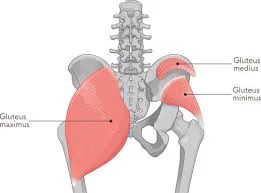
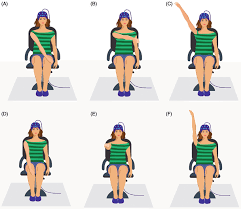
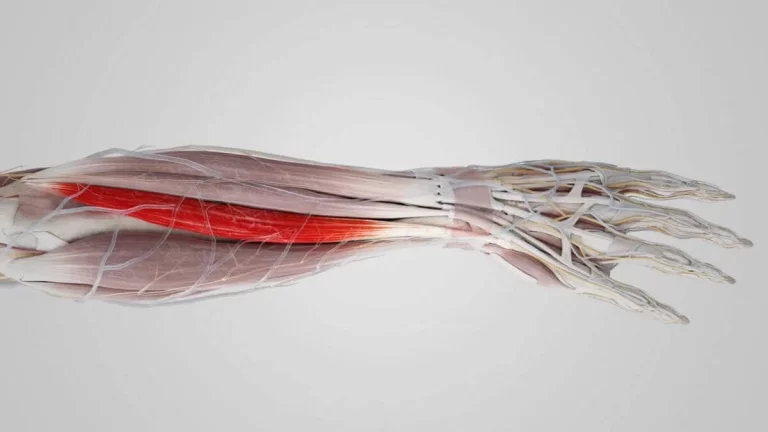
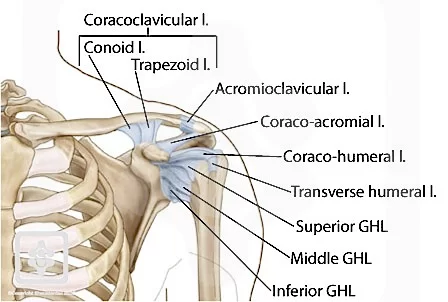
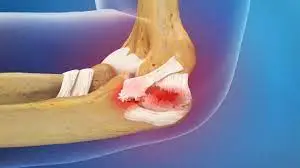
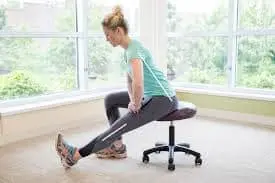

12 Comments